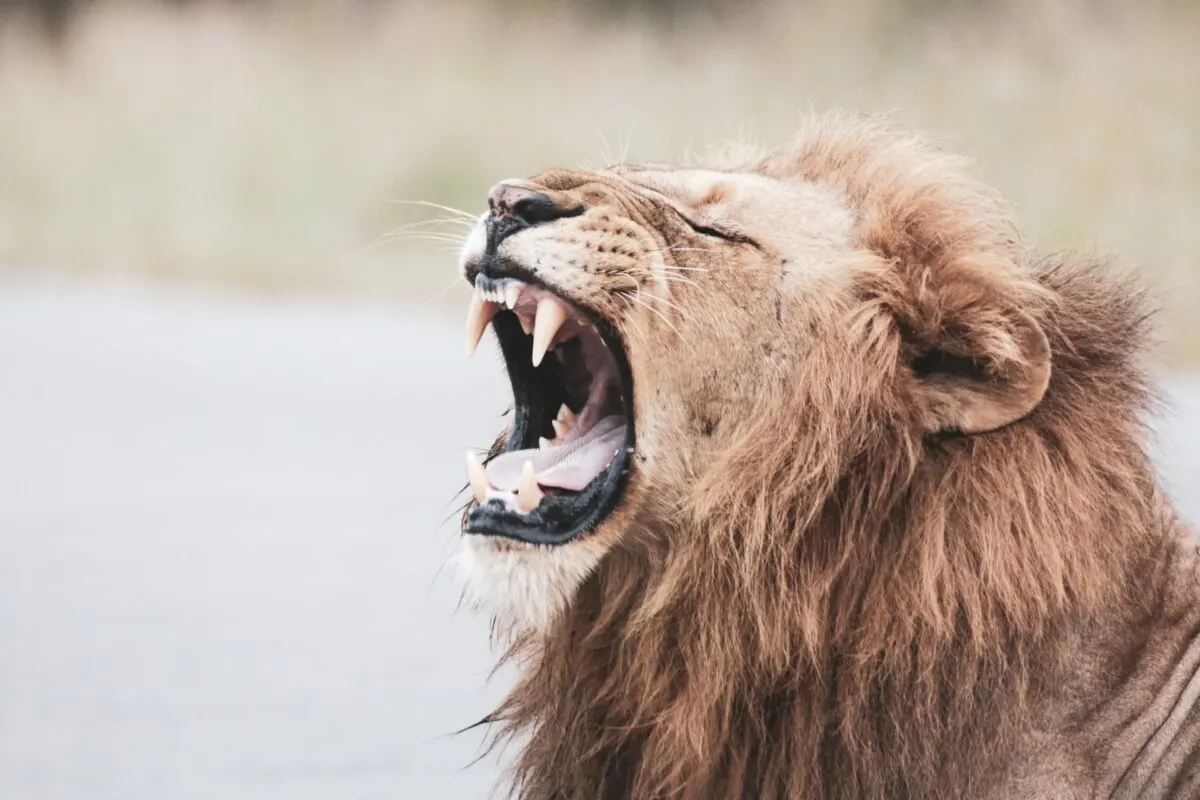Welcome to the epic showdown where lion vs. hippo compete for dominance in the wild. Let’s jump right in!
The animal kingdom offers us a fascinating array of creatures, large and small. Of these, two outstanding members are the lion and the hippopotamus, powerful animals that have inhabited the planet for centuries.
The lion is known for its strength, courage, and agility; its imposing stature has made it an icon of nobility—and danger—around the world. The hippo is found in lakes or rivers throughout Africa. But which of these mighty animals would come out on top if they were to face off against one another?
This article will explore the differences between lions and hippos to determine which would likely emerge victorious in a battle between these formidable foes.
Want to jump ahead? Click below
Key Differences Between Lions Vs. Hippos
Lions and hippos are two distinctive animals that have key differences between them.
Physical Characteristics
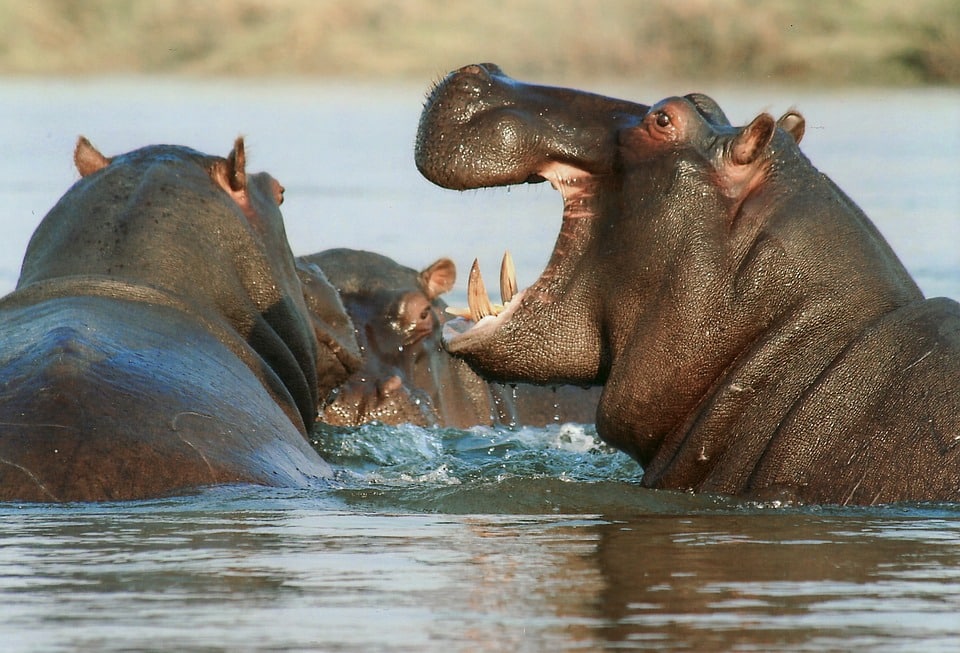
Lion: The lion is an iconic species with an instantly recognizable physique. Its coat is usually light brown, although some subspecies can be black or yellowish-brown. The mane on the male lion’s head and neck is one of its most recognizable features, with this tuft of fur ranging from blond to deep red-brown and extending from the back of its head to its chest. Lions have potent bodies, short legs, and long muscular tails that end in a tuft of black hair.
They have large round heads with strong jaws, large canine teeth, and sharp retractable claws that can reach up to 4 inches in length. Adult males weigh 330 pounds while females weigh around 265 pounds; they typically measure 4-6 feet long from their heads to the tip of their tails.
Hippo: The hippopotamus has a barrel-shaped body and a thick layer of fat beneath its skin to keep it cool in hot climates. It has four stubby legs with webbed toes for easy swimming and two large eyes on either side of its head to easily see away from the water’s edge when it surfaces for air.
Its grayish-brown skin is covered with short bristly hairs for protection against sunburns, parasites, and abrasions when it rubs against rocks or other hard surfaces on dry land or underwater.
Its small snout gives it a distinctive look compared to most other mammals; it also has small ears that rotate independently to collect sound waves from all directions to be aware of potential dangers near its watery habitat. Adult male hippos typically weigh 3200-5000 pounds, while female hippos weigh 2200-3500 pounds; they measure 8-14 feet long from head to tail, depending on age and sex.
Fighting Abilities
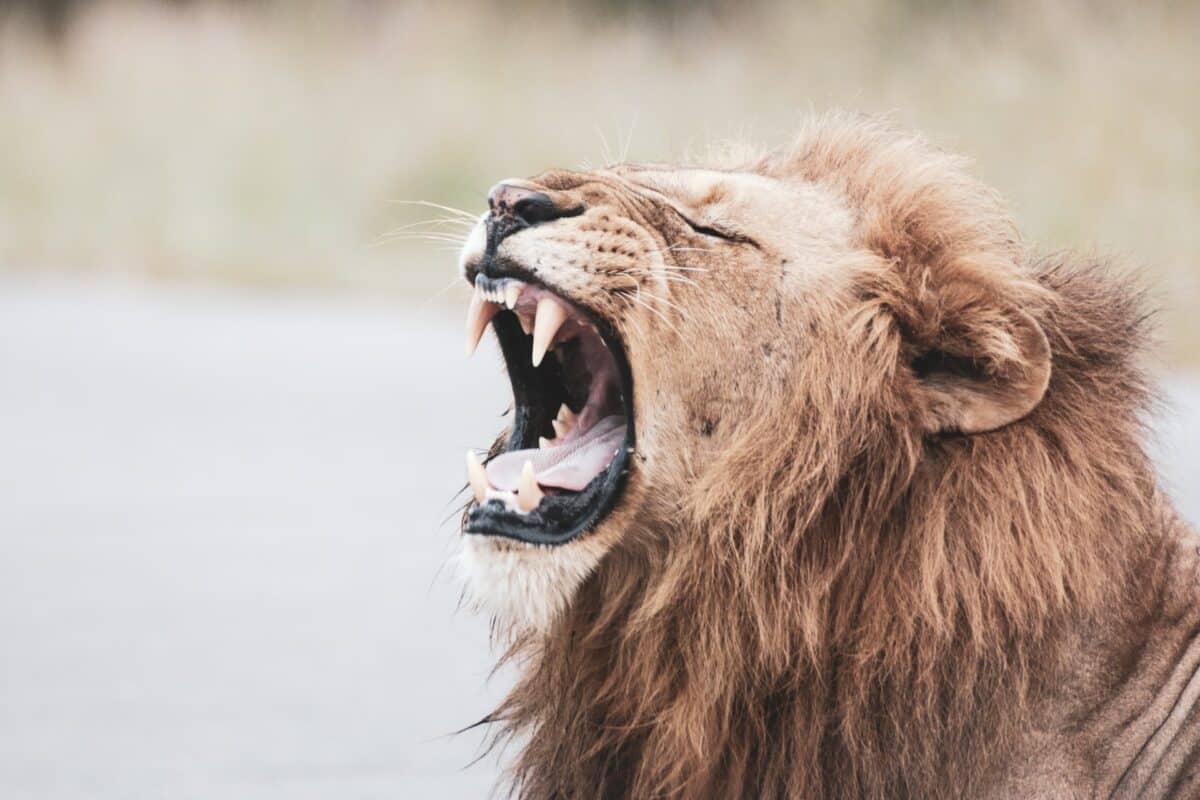
Lion: Lions are renowned for their fearlessness and ferocity in battle, making them the jungle king. These large cats possess powerful jaws capable of delivering a crushing bite to their prey and sharp claws that can easily tear through animal hide. With their strong muscles and agility, lions can easily take down animals as large as buffalo and wildebeest with relative ease.
Moreover, lions rely on teamwork when hunting for larger prey that cannot be taken down single-handedly. A pride of lions will work together to corner and attack the animal from multiple angles to guarantee its capture. Additionally, lions have an intimidating roar that can be heard from up to 8 km away, warning other animals of their presence and dominance in the savannah.
Hippo: The hippo may not look like much at first glance, but its fighting abilities have earned it the nickname “river horse” in some African cultures for a good reason. With sharp tusks and long incisors, the hippo wields enough power to snap bones in two with a single swing of its head.
An almost unrivaled level of aggression further complements this strength; unlike most animals, the hippo will not hesitate to charge potential threats without warning and can reach speeds up to 30 km/h when provoked. Although it relies heavily on water for protection due to its lesser speed on land, this does nothing to diminish its reputation as one of nature’s most dangerous predators.
Comparative Analysis Of Lion Vs. Hippo
Habitat And Geographical Distribution
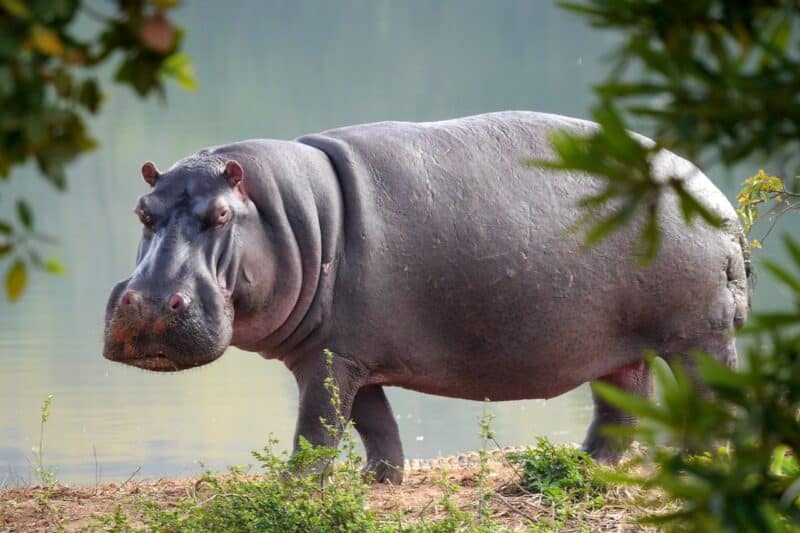
The lion’s natural habitat includes grasslands, woodlands, and open plains in sub-Saharan Africa. Since they live in hot climates, most lions prefer to stay out of direct sunlight during the day by taking shelter under trees or rocks or near rivers for coolness.
Conversely, the hippopotamus lives mainly in sub-Saharan Africa and inhabits rivers, lakes, and swamps. They spend most of their time submerged in water during the daytime to protect themselves from the sun’s heat.
Bite Power And Teeth
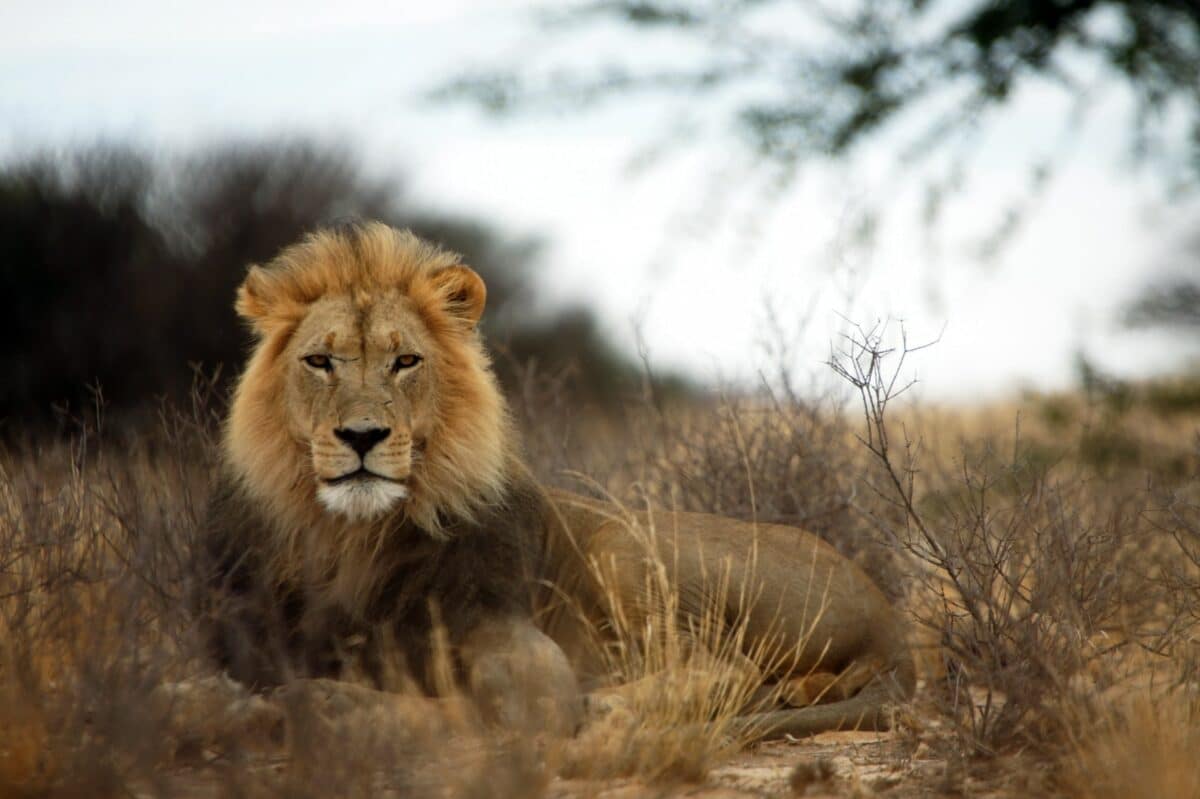
When defending themselves or their pride, lions often opt for intimidation rather than physical force, using a much less powerful 650-1000 PSI bite instead. In this case, they use 30 teeth, including four 4-inch canines delivered with incredible accuracy.
Hippos possess a mighty bite force capable of exerting up to 1,800 PSI (pounds per square inch). Their sharp teeth make this power all the more deadly – incisors measuring up to 1.2 feet long and canines reaching lengths of 1.5 feet – which can easily splinter bones and tear the prey open.
Behavior And Social Structure

Lions are social animals who live in pride consisting of related females and their cubs as well as two or three males, commonly referred to as “the pride.” Lions hunt together cooperatively using strategies such as stalking prey from different directions or chasing them into ambush points.
The hippopotamus is also a social animal that lives together in groups called pods or bloat, consisting of both males and females and their young ones. They spend most of their time grazing on vegetation near water sources or bathing in mud pools to keep cool during the hot African days. Both species are territorial animals that defend their turf against intruders by roaring or engaging in physical combat when necessary.
Dietary Habits
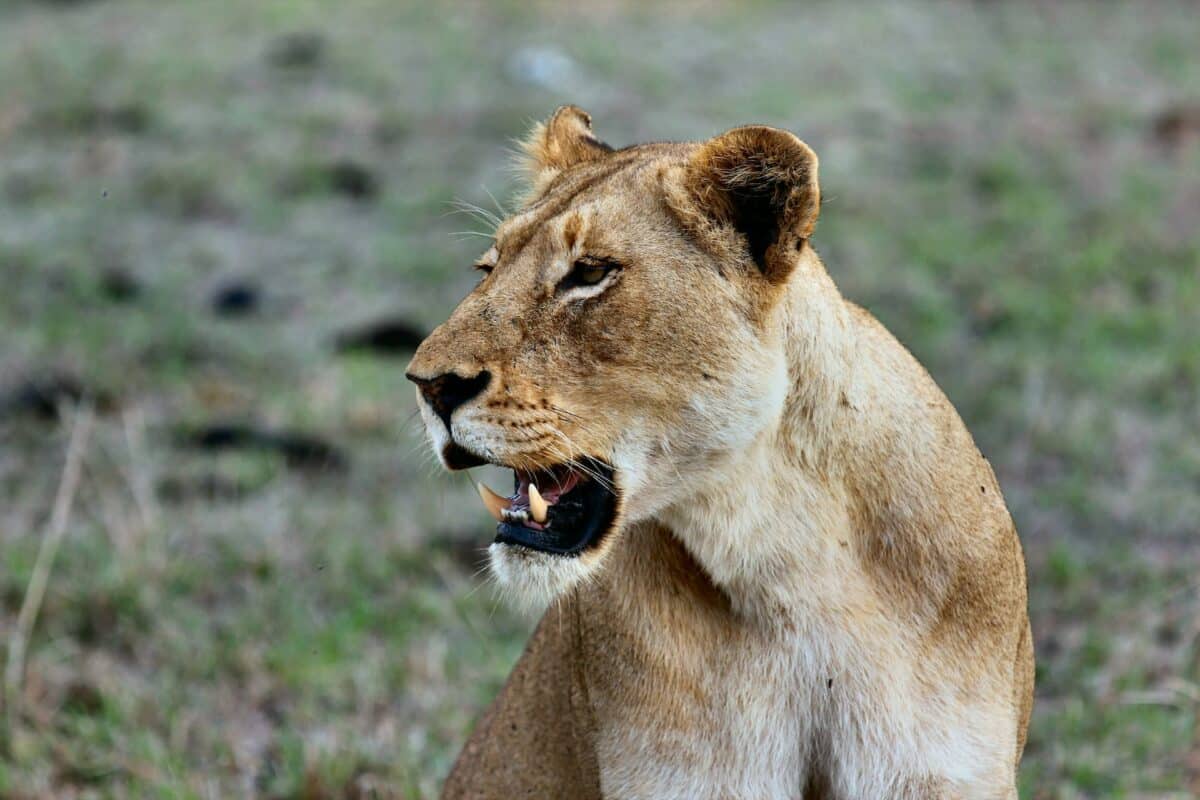
Lions are carnivorous predators who rely on small mammals like antelope, deer, or wildebeest for sustenance. At the same time, hippos are herbivores who primarily eat grasses but also consume leaves and fruit when available.
Lions hunt during nightfall, while hippos graze during nighttime hours. However, they may venture out more often if food is scarce due to drought conditions or increased competition between species within their habitat range.
Learn more about What do hippos eat?
Speed And Movement Type

Lions are masterful sprinters with incredible speed, reaching a maximum of 30 mph over short distances and maintaining speeds of up to 20 mph for extended periods. On land, they prefer to use their unique trotting gait, which helps them cover the ground quickly while not expending too much energy.
On the other hand, Hippos can reach up to 5 mph in the water and have been known to launch themselves at enemies with a galloping gait that sees them close in on their target with a closing speed of 50mph over short bursts.
Wrapping Up with Lion vs. Hippo
The two animals have many similarities, such as being social creatures who live together cooperatively within family units. Still, they differ significantly due to their dietary habits, size, behavior patterns, and geographical distribution across Africa.
Despite these differences, they share many common traits, such as being fierce territorial animals who will fiercely protect their turf against any intruders when necessary, which makes them both essential species within African wildlife conservation efforts today.
Thanks for following along with us! Next up, Lion Vs. Puma.
- Watch Hippo Mother Chases Crocodiles To Protect Her Dead Child - April 15, 2024
- Watch Elephants Ask Rescuer To Play Piano - April 12, 2024
- Top Techniques To Cleaning Up Dog Vomit - April 11, 2024

